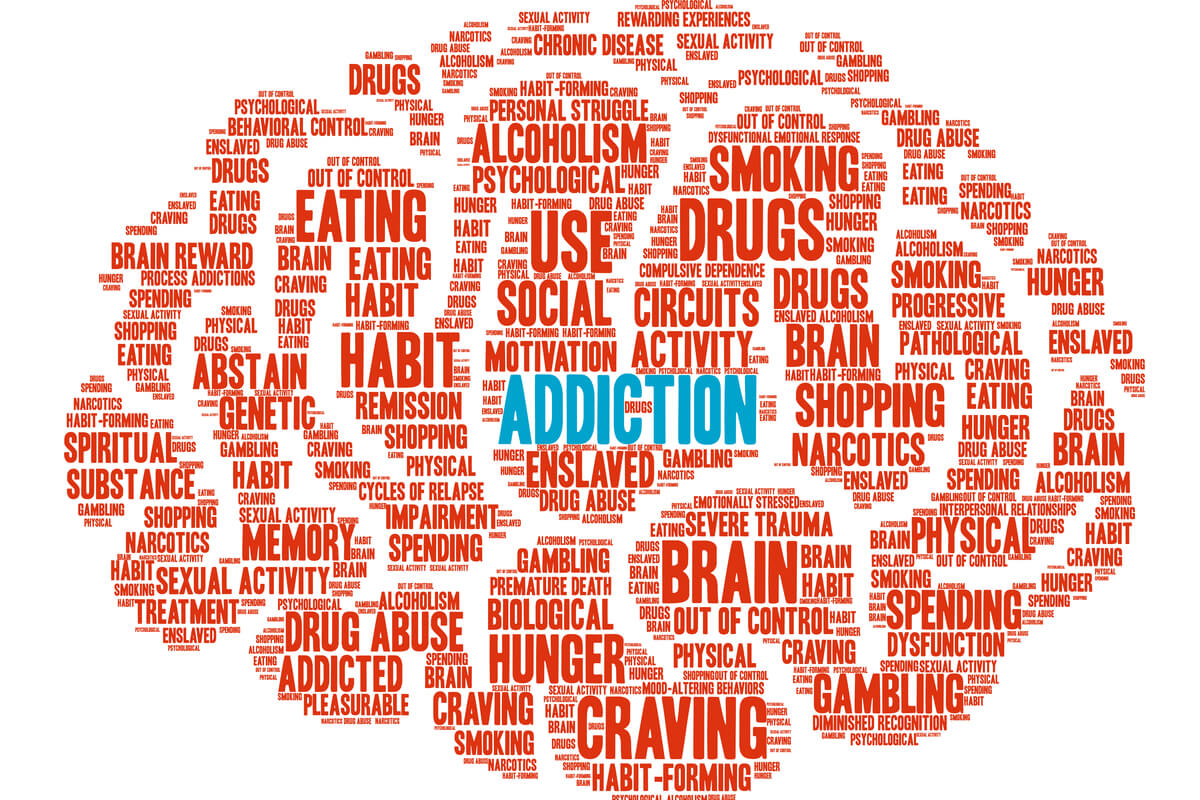
Use of substances either outside of work hours or during work hours can cause a range of problems for both employees and employers. Some examples are lost productivity, injuries, legal liabilities, rise in health insurance premiums, among others.
Up to 16% of people with work related injuries had alcohol in their system.[1]. The National Safety Council estimates that about 8% of people in the workforce have some form of substance use disorder.[2]
Every case of an untreated substance use disorder in an employee costs an employer an average of $11,128 due to the following:
- Lost productivity
- Healthcare costs
- Absenteeism [2]
Prevalence of Substance Misuse in the Workplace
The exact prevalence of substance use at work is hard to measure, relying largely on self reports. One study found that 22.5% of people say they’ve used alcohol or drugs while at work at some point. [3] One in five women report having used drugs or alcohol while on the clock. For men, it was one in four. About 20% of people say they’ve used cannabis while at work: 13% say they use cannabis more than once a month while on the clock, and 5% report daily use. [3]
As many as 66% of people say they’ve consumed alcohol while at work. 10% of people said they have used prescription opioid painkillers while at their jobs.
People who work from home, especially during the COVID-19 pandemic, may be more likely to consume alcohol or marijuana while working. One study found that 15% of people who worked remotely admitted to having used cannabis while working. [4]
Professions With High Rates of Substance Misuse
The exact prevalence of SUD by profession is not known. Some of the highest rates of on-the-job alcohol use occur in the mining industry, where 17.5% of employees report consuming alcohol while at the job. A close second is the construction industry at 16.5%.[5]
Construction and mining
Construction and mining workers have a high risk of injury and chronic pain due to the physical nature of the job, which may put them at elevated risk of substance use disorder. The Massachusetts Department of Public Health found that from 2011 to 2015, employees in the Commonwealth’s construction or mining industries accounted for 26% of all known opioid deaths.
Hospitality
People in the hospitality industry — restaurants, food service, hotels, and other related areas — also have higher rates of dangerous drinking habits and drug consumption, often while on the job.
In 2015, the National Survey on Drug Use and Health found that workers in this industry had a 16.9% rate of substance misuse in the past month and also the highest rate of use of illegal drugs, at 19.1% of those surveyed.[6]
In one study, employees working at a national restaurant chain reported 80% of male employees displayed unhealthy drinking patterns while still reporting to work, and 64% of female employees did the same.
Health Care
Around 14% of people who work in hospitals and clinics have some form of substance use disorder. In 2009, 50.3% of doctors enrolled in a physician health program reported patterns of heavy drinking, and 35% reported off-label opioid use.
The reason behind the high rates of SUD among health care workers is unknown and likely multifactorial. One hypothesis is that the intense personal and professional demands and stress of the healthcare industry put clinicians at higher risk of substance use. Other hypotheses include the easy availability/access to illicit pills/substances [7].
Arts & Entertainment
People who work in the arts and entertainment industries also have wide access to recreational substances. They are often surrounded by other people who either participate in substance use. Performance anxiety and stress related to unhealthy schedules contribute to 14% of people in the industry reporting past-month drug use and 11.5% reporting heavy drinking.
Legal Professions
In 2016, the American Bar Association released a study that found that 20% of the 13,000 registered lawyers who participated in the study fit the description of problem drinkers – twice the rate of other professionals of a similar education.[8] Younger lawyers, those practicing for less than 10 years, showed the highest rates of substance misuse and mental health issues, such as anxiety, stress, and depression.
Why Certain Professions Are More at Risk
What do these fields have in common that might predispose these workers to SUDs? It is not known for sure, but some hypothesis include:
- Jobs that have easy accessibility to drugs or alcohol on site
- Jobs that are highly stressful
- Jobs that require long or irregular hours
- Jobs that have a social culture revolving around substances
- Jobs that predispose to injury or chronic pain conditions such as physical labor
Psychology Today notes that “hustle culture,” the trend of being available for work 24/7 contributes greatly to burnout. It may contribute to employees using drugs and alcohol to stay awake longer or self-medicate feelings of despair or guilt.[9]
The Pandemic’s Role
Substance misuse in the workplace worsened during the COVID-19 pandemic, largely because employees who were struggling with a dependence on drugs and alcohol had few reasons to not consume their substances during the day while working from home. It also made it easier to consume anonymously without the accountability of having to go into the office.
The Society of Human Resource Management completed a survey of 1,011 American workers and discovered 25% of respondents had been high or drunk while on a work-related video call.[11] Furthermore, 20% of respondents admitted to using cannabis, alcohol, or another drug while working from home.
A whopping 73% said that if they had to return to the office, they would actively miss being able to consume cannabis. And more than a quarter of those surveyed acknowledged that one of the things they liked about working from home was the freedom to drink and use drugs as they worked.
Preventing Substance Misuse in the Workplace
The Department of Labor encourages employers to monitor for and address substance use disorders in their employees. [12] When bosses take the time to invest in substance misuse treatment, employee assistance programs, mental health days, and other forms of care for their workers, the benefits are widespread, including:
- decreases in arguments and conflicts with management
- improved attendance and productivity
- decrease in work-related mistakes
- decrease in job-related injuries
The Substance Abuse and Mental Health Services Administration advises that offices make sure that everyone in the workplace understands the dangers and risks, both professional and personal, of engaging in substance misuse (at home, but specifically while on the job). [13]
Employee Assistance Programs
Employee assistance program (EAP) are when a company offers confidential assessments, counseling, and referrals to employees who are struggling with mental health or substance use disorder. [14]
EAP counselors are trained in addiction science and organizational psychology. They work as consultants to management and leadership to identify the risk factors for substance misuse and to address the emotional and mental needs of employees.
How Bosses Can Address Substance Misuse in the Workplace
What can a boss do to help a struggling colleague?[15]
If the employee’s substance misuse is proving disruptive, an employer should first start with an open conversation with the employee. If the employee requires time off for medical appointments or counseling in order to address their disorder, the employer should strive to provide this as much as possible. If the company offers employee assistance programs or other referrals to mental health services, this should be offered. Ultimately, if an employee’s substance use is interfering significantly with their job performance, their personal safety or safety of others, termination might be appropriate or necessary. In these circumstances, it is important for an employer to communicate with human resources and perhaps seek legal counsel in order to ensure that all employee rights are upheld.

Medically Reviewed By Elena Hill, MD, MPH
Elena Hill, MD; MPH received her MD and Masters of Public Health degrees at Tufts Medical School and completed her family medicine residency at Boston Medical Center. She is currently an attending physician at Bronxcare Health Systems in the Bronx, NY where ... Read More
- Workplace Safety: The Connection Between On-the-Job Accidents and Addiction. Quit Genius. https://www.quitgenius.com/blog/workplace-safety-the-connection-between-on-the-job-accidents-and-addiction. July 2021. Accessed March 2023.
- Drugs at Work: What Employers Need to Know. National Safety Council. https://www.nsc.org/workplace/safety-topics/drugs-at-work/drugs-at-work-home. Accessed March 2023.
- Buzzed on the Job: 22.5% of Americans Have Used Drugs or Alcohol at Work, Survey Finds. Daily Mail. https://www.dailymail.co.uk/news/article-6865547/Buzzed-job-22-5-Americans-used-drugs-alcohol-WORK-survey-finds.html. March 2019. Accessed March 2023.
- Study: 15% Of Workforce Used Weed While Working From Home. LA Weekly. https://www.laweekly.com/study-15-of-us-used-weed-while-working-from-home/. August 2021. Accessed March 2023.
- “National Crisis: Opioid Abuse in the Construction Industry.” American Society of Safety Professionals. 2018. https://www.assp.org/news-and-articles/national-crisis-opioid-abuse-in-the-construction-industry. Accessed March 2023.
- Risk Factors for Alcohol and Other Drug Use by Healthcare Professionals. Substance Abuse Treatment, Prevention, and Policy. https://www.ncbi.nlm.nih.gov/pmc/articles/PMC2265282/. January 2008. Accessed March 2023.
- Midyear 2018: Panel to Examine Lawyer Substance Abuse, Mental Health – And Solutions. American Bar Association. https://www.americanbar.org/news/abanews/aba-news-archives/2018/02/midyear_2018_panel/. February 2018. Accessed March 2023.
- The Rise and Grind of ‘Hustle Culture’. Psychology Today. https://www.psychologytoday.com/us/blog/the-right-mindset/201910/the-rise-and-grind-hustle-culture. October 2019. Accessed March 2023.
- Poll: 75% of Employers Say Their Workplace Impacted by Opioid Use. National Safety Council. https://www.nsc.org/in-the-newsroom/poll-75-of-employers-say-their-workplace-impacted-by-opioid-use. March 2019. Accessed March 2023.
- Substance Abuse Got Worse Amid the Pandemic and Remote Work. Society of Human Resource Management. December 2021. https://www.shrm.org/resourcesandtools/hr-topics/benefits/pages/substance-abuse-got-worse-amid-pandemic-and-remote-work.aspx. Accessed March 2023.
- Employees Respond to Rising Substance Abuse With Treatment, Support. Society of Human Resource Management. https://www.shrm.org/resourcesandtools/hr-topics/benefits/pages/employers-respond-to-rising-substance-abuse-with-treatment-and-support.aspx. March 2021. Accessed March 2023.
- Prepare Your Workplace. Substance Abuse and Mental Health Services Administration. https://www.samhsa.gov/workplace/toolkit/plan-implement-program/prepare-workplace. August 2020. Accessed March 2023.
- What Is an Employee Assistance Program? United States Office of Personnel Management. https://www.opm.gov/faqs/QA.aspx?fid=4313c618-a96e-4c8e-b078-1f76912a10d9&pid=2c2b1e5b-6ff1-4940-b478-34039a1e1174. Accessed March 2023.
- Addiction in the Workplace: Tips for Employers. U.S. News & World Report. https://health.usnews.com/health-news/patient-advice/articles/2016-08-04/addiction-in-the-workplace-tips-for-employers. August 2016. Accessed March 2023.
Download Our Free Program Guide
Learn about our program, its effectiveness and what to expect
Related articles
Imagine what’s possible on the other side of opioid use disorder.
Our science-backed approach boasts 95% of patients reporting no withdrawal symptoms at 7 days. We can help you achieve easier days and a happier future.








